Panama
 Boquete fairground
Boquete fairground
Some Things You (probably) Didn’t Know About Panama
- It’s actually not so tiny. Panama looks small on the world map, but that’s partly because of its position (sandwiched between two huge continents) and partly due the Mercator projection. Panama’s area is 75,517 sq km. If it were a U.S. state it would rank #41, behind South Carolina and ahead of West Virginia.
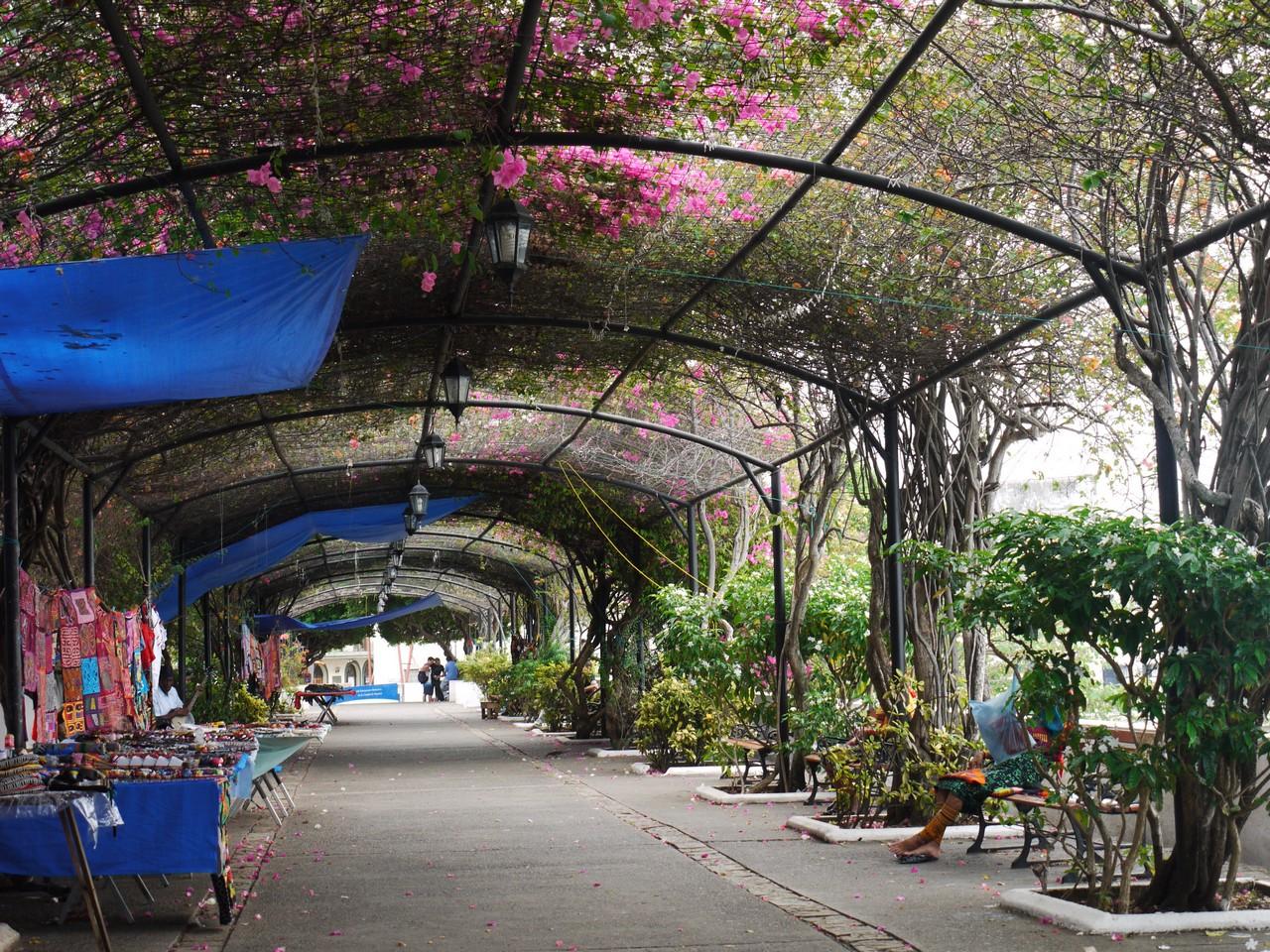 Casco Viejo, Panama City
Casco Viejo, Panama City
-
The name Panamá is an indigenous word that probably means “abundance of fish”.
-
Panama was founded to allow the canal to be built. Its official motto is “For the Benefit of the World”. More precisely, Panama was founded so that the canal could be built on terms favourable to the United States. Panama declared independence from Colombia in 1903, the U.S. navy prevented the Colombians from sending reinforcements to assert their rule, and that was that. Construction of the canal began the following year.
 Miraflores locks, Panama canal
Miraflores locks, Panama canal
- In some ways, Panama is the least Central American of the Central American countries. Besides being historically ruled from Colombia rather than Guatemala, it’s also in a different time zone than the other six nations, and it’s the only country in the region whose license plates don’t read “CENTRO AMERICA” or “C.A.”
Priorities
A rafting guide in Boquete told us this story about a recent trip that he led. A young couple was on the raft, and while passing over one of the larger rapids both of them fell into the river. The guide pulls the woman out of the water, all hysterical, shouting “mi novio, mi novio!” (“my boyfriend, my boyfriend!”). Relax, the guide tells her, and proceeds to pull her man out of the water as well.
Half an hour later, another big rapid, and once again the young couple spills out of the boat and into the river. This time it is the man who is rescued first, all hysterical, shouting “mi sandalia, mi sandalia!” (“my sandal, my sandal!”)
The Darien Gap
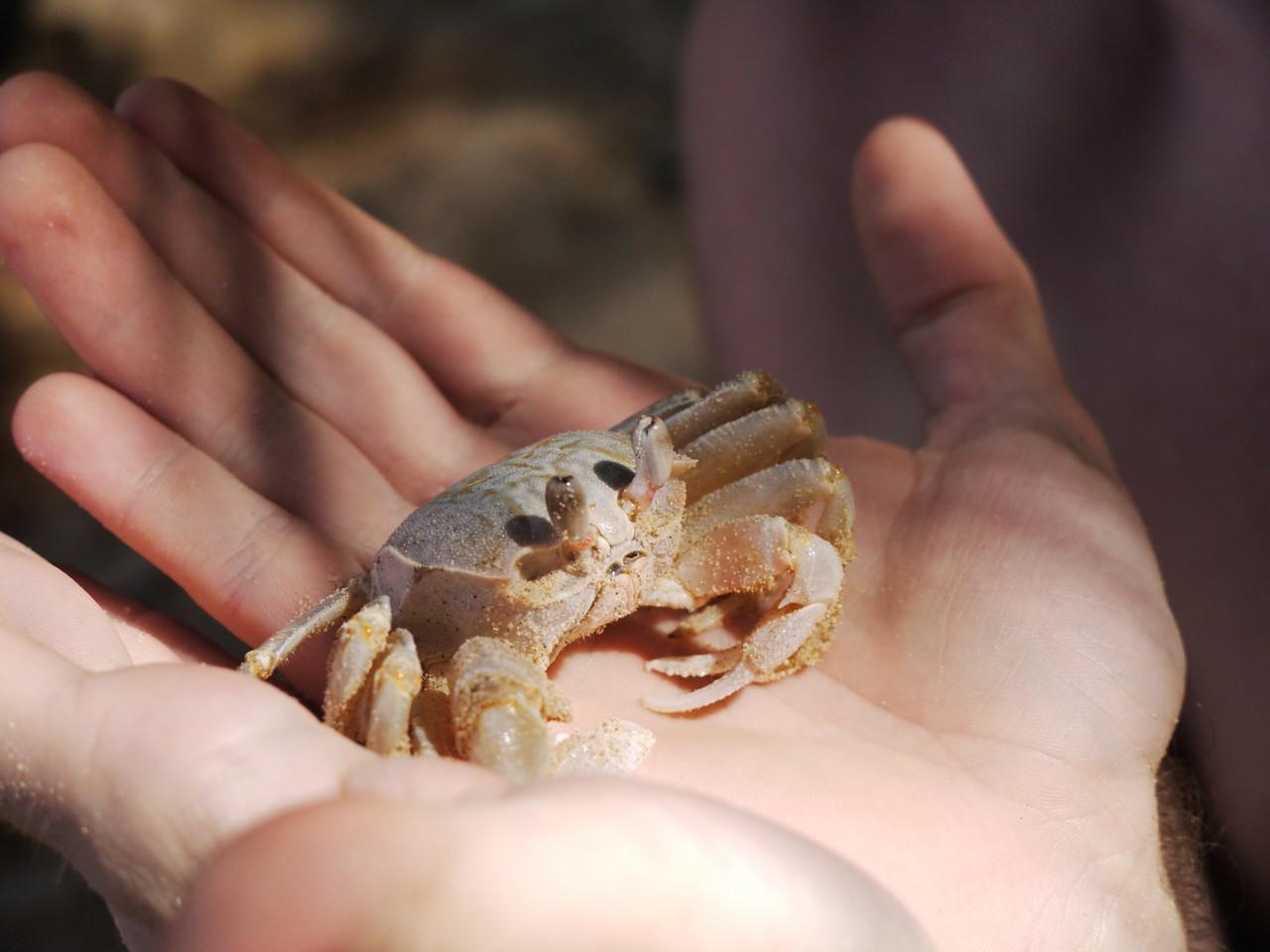 Annoying the locals on Isla Bolaños, Gulf of Chiriquí
Annoying the locals on Isla Bolaños, Gulf of Chiriquí
The Pan-American Highway extends all the way from Alaska to Patagonia. All the way, that is, except for an 87-km section in eastern Panama along the border with Colombia, known as the Darien gap.
The Darien gap is some seriously rough terrain. There aren’t any roads, just footpaths branching every which way. The forest is infested with deadly fer-de-lance snakes. Diseases like malaria and yellow fever, which were eradicated elsewhere in the country, are still present here. The human population consists mostly of Colombian guerrillas from FARC who regularly kidnap people for ransom.
Is it impossible to build a road through the Darien gap? Of course not, and the Colombian government is all for it. The Panameños, however, are less keen. Colombia is a country with serious problems, and having a barrier of dense jungle between it and Panama seems like a good idea.
Something to Howl About
Howler monkeys are common in the forests all over Central America. Often you can hear them long before you see them. Why they are called howler monkeys is a bit of a mystery, since clearly the sound they make is a bark, not a howl. But maybe “barker monkeys” doesn’t sound as exciting.
Howler monkeys bark (sorry, howl) for various reasons, such as to assert their social status or to warn of danger. People sometimes howl at the howler monkeys to make them howl back, but this can cause undue stress to the monkeys and is not encouraged.
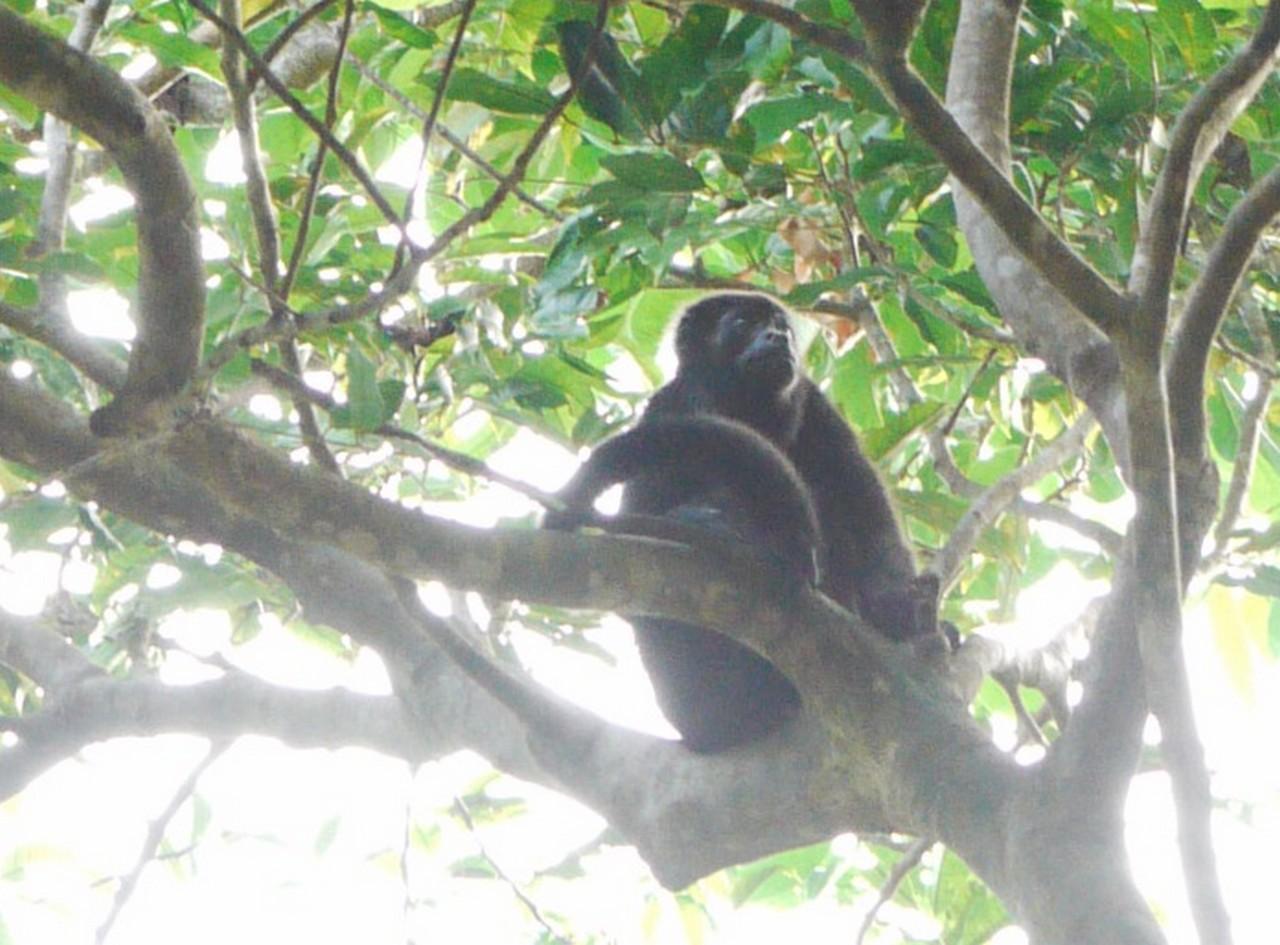 Howler monkey, Boca Brava
Howler monkey, Boca Brava
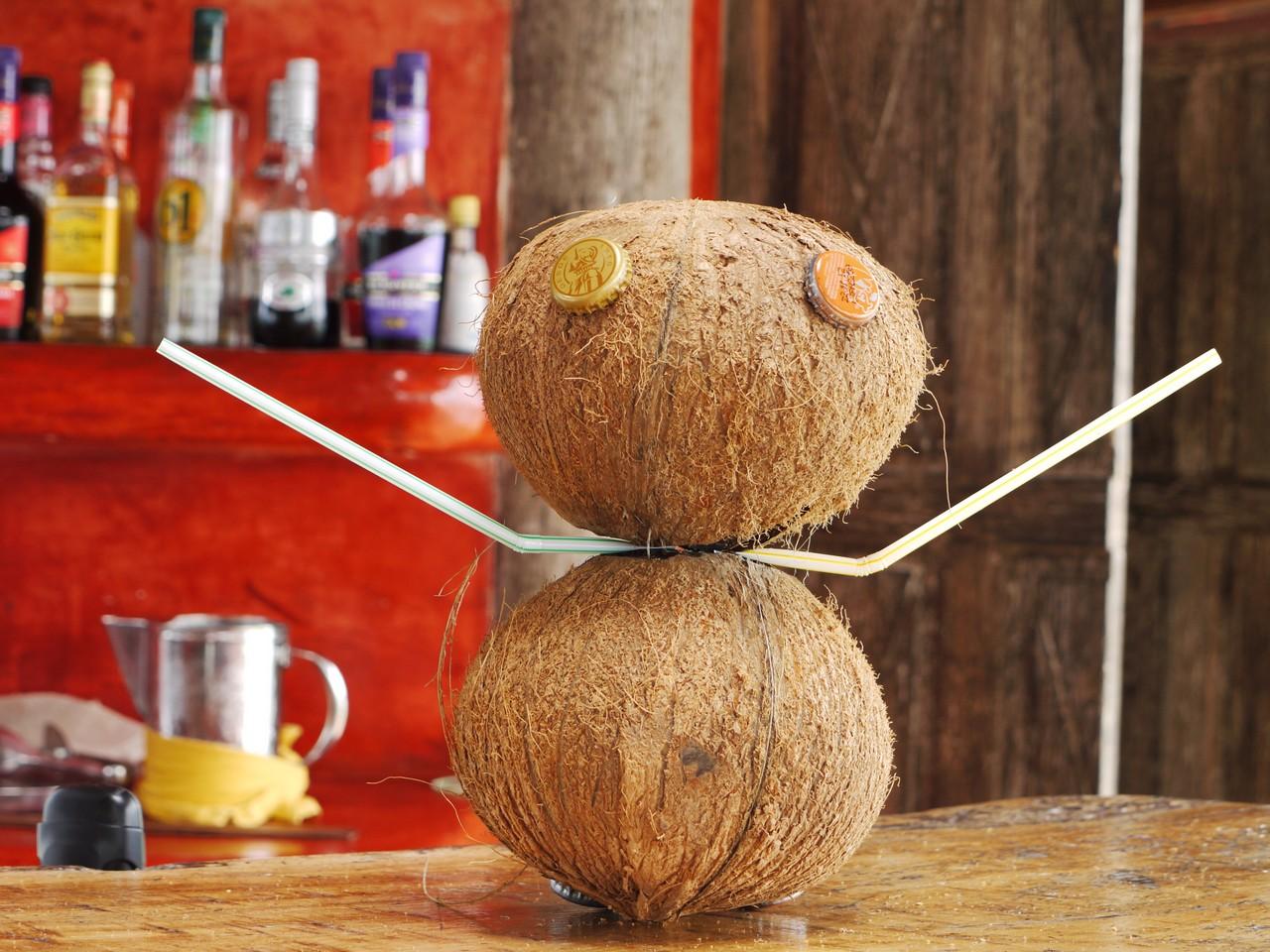 Making art with local materials, at the bar in Cala Mia resort, Boca Brava
Making art with local materials, at the bar in Cala Mia resort, Boca Brava
What happens when barking monkeys meet barking dogs? An awful racket, that’s what. Early one morning in Boca Brava, a family of howler monkeys had stationed itself in the trees inside the resort where we were trying to sleep. The two resident dogs were driven completely crazy. They had no hope of climbing the trees, and the monkeys had no intention of coming down. The standoff lasted for hours, much to the amusement of the guests, who didn’t have to worry about oversleeping that day.
World’s Most Boring Career?
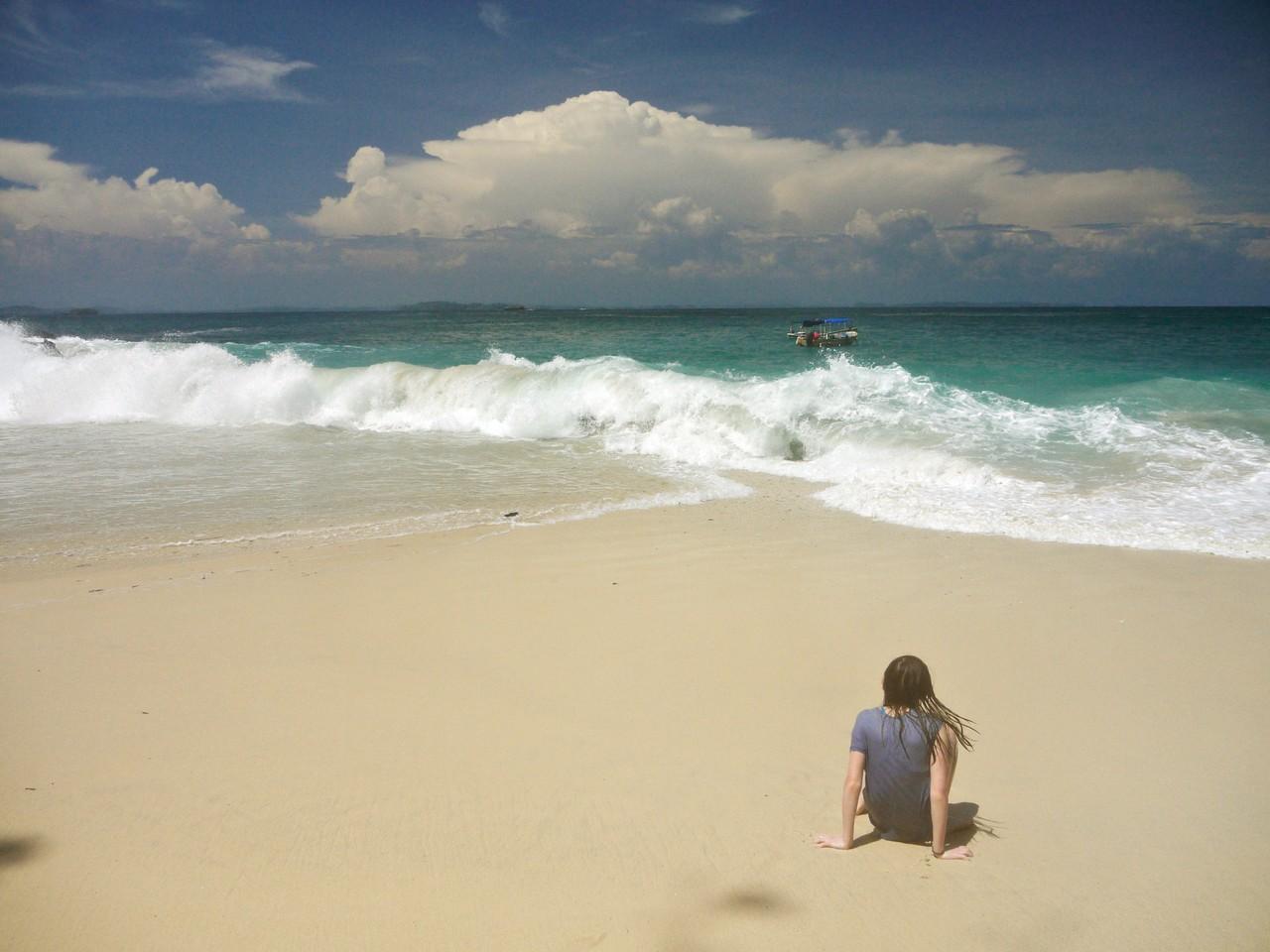 Isla Bolaños
Isla Bolaños
We joined a so-called “island tour” from Boca Brava. In practice this meant being intentionally stranded on a remote island beach in the Gulf of Chiriquí for the day, with a snorkel, a book, a sandwich, and a few bottles of beer. There are certainly worse ways to spend your day. But what if this was your everyday?
That is pretty much the case for the boat captain who took us there. He motors out to the island with groups of tourists three or four times per week, then he just sits there for six hours until it’s time to go home. He doesn’t swim or snorkel - perhaps he used to, but it got old. He doesn’t visit the shore, preferring to stay in the boat all day. He doesn’t listen to music, or read a book or a newspaper. He just falls asleep, or sits there looking at the same scenery day after day. We have to admire his inner peace. For us visitors, one day living this lifestyle was quite enough.
Panama City
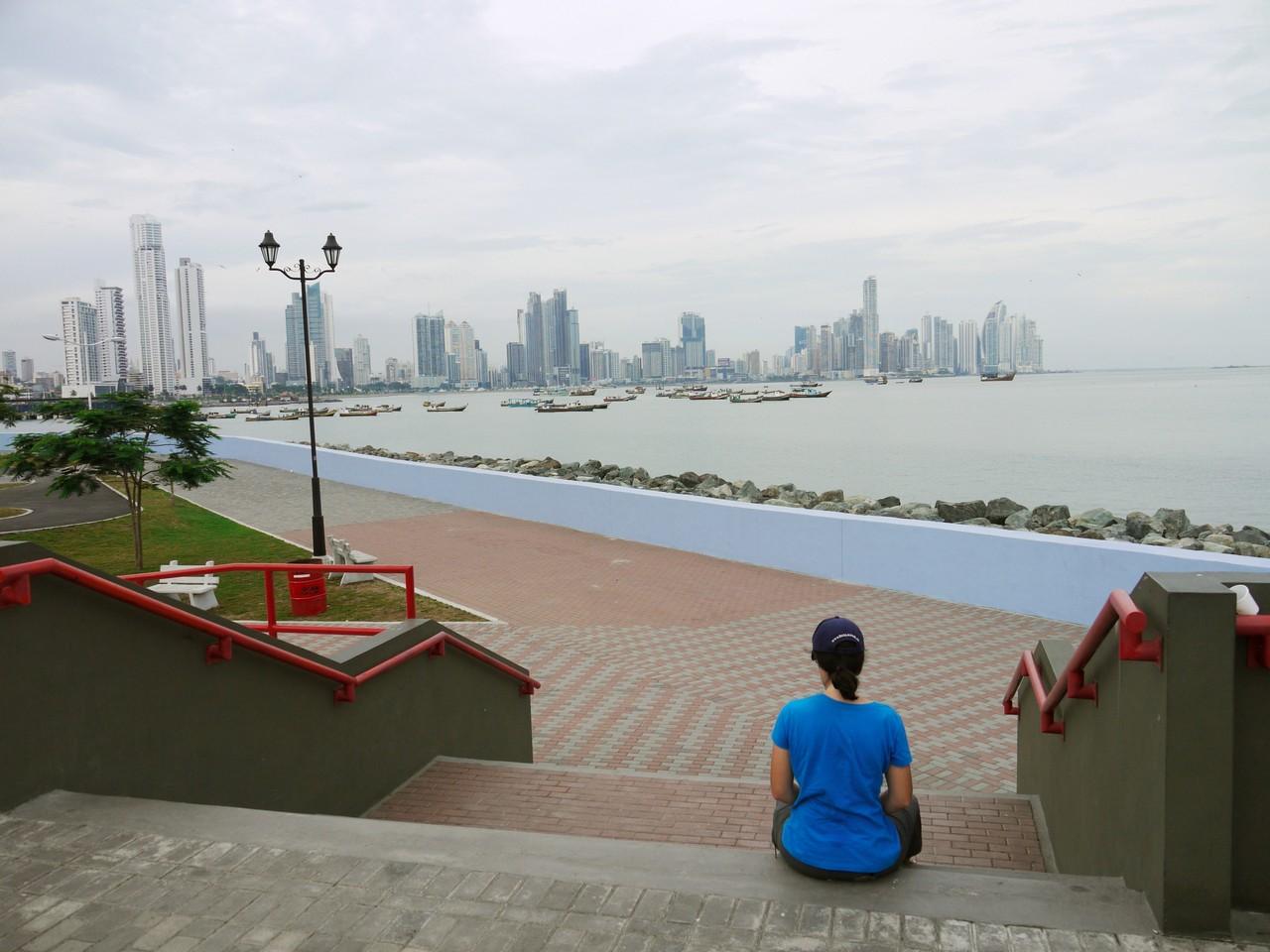 Panama City's banking district, view from the cinta costera
Panama City's banking district, view from the cinta costera
Of the seven capitals of Central America, Panama City is the only one that’s on the tourist route. Few people really like the others: Guatemala City, Tegucigalpa, San Salvador and Managua all have too much violent crime for most people’s tastes. San Jose is dull, and Belmopan is tiny and sterile. Panama City, on the other hand, is reasonably safe, interesting, and pretty. The ruins of the old town, destroyed by the pirate Henry Morgan, are adjacent to new skyscrapers in the banking district. From the metropolitan park, with its toucans and monkeys, you can look down on the pacific locks of the Panama canal. We spent a lot of time walking around Casco Viejo (the fortified colonial compound), and almost as much time at the nearby fish market eating ceviche out of styrofoam cups.
 Ceviche at the fish market, Panama City
Ceviche at the fish market, Panama City
The city is developing fast - everywhere you look there are new businesses, new residents, new ideas. A lot of money is being made. So if you’re looking to make a change, and if you can stand the humidity and heat, Panama City is a good place to go.
See more photos from Panama.